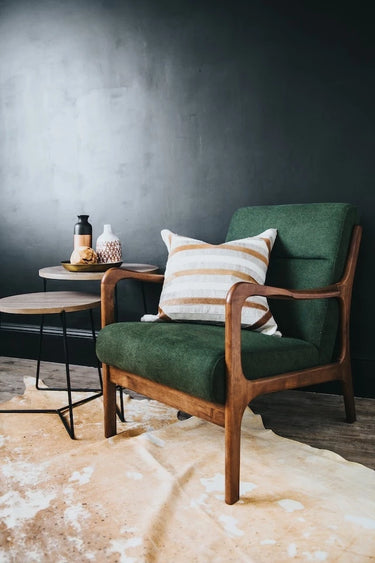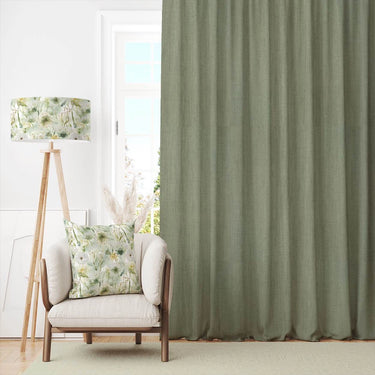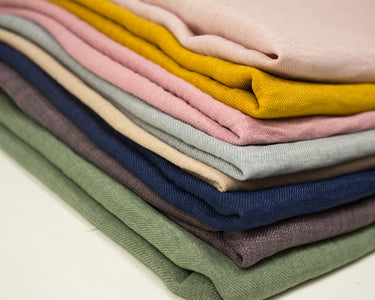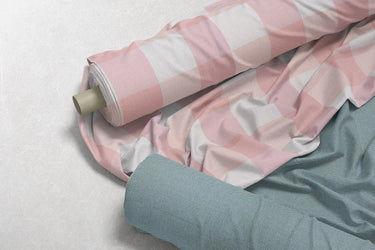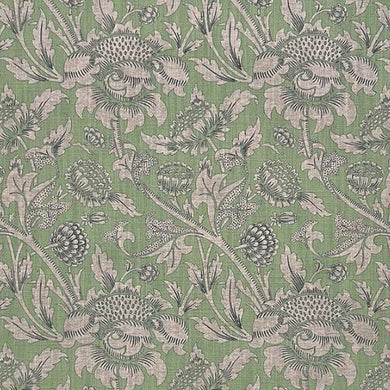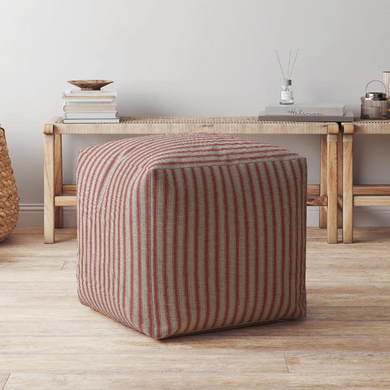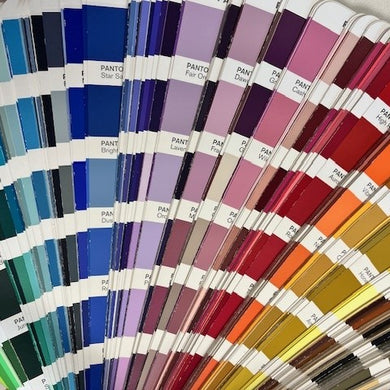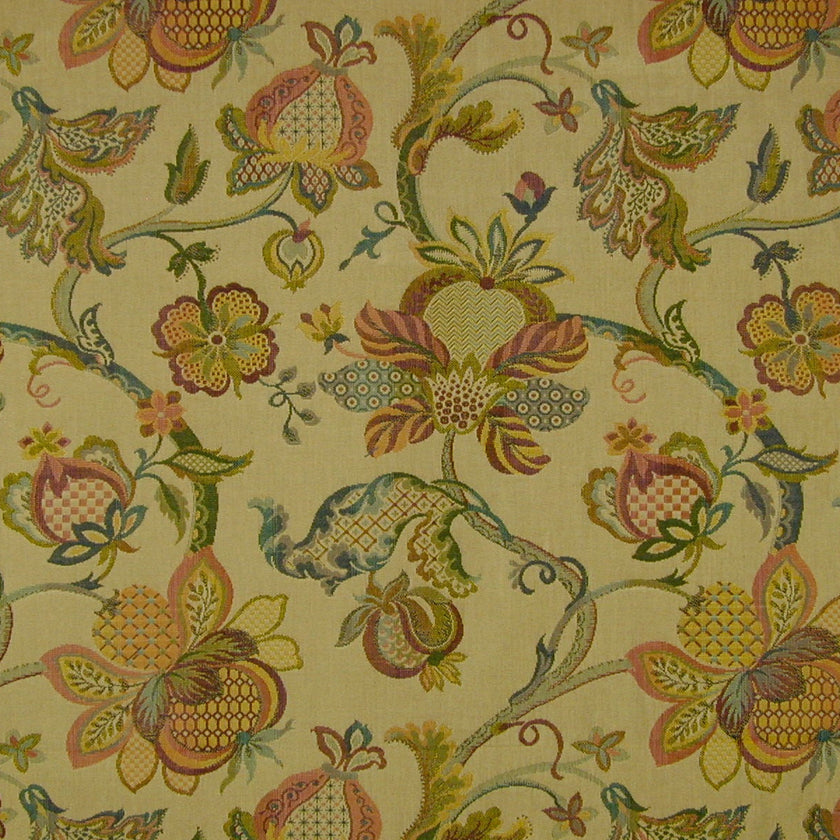

The tables in our tutorials have been formulated as a result of our experience making bespoke soft furnishings. However, when estimating for specific designs, the quantities may need to be adapted and so should only be used as a guide.
The cut drop is the drop that you have to cut each width to allow matches of curtains and patterns. When calculating cut drops it is important to allow for allowances; the top of the curtains, hems and any pattern repeat. When matching the widths of fabric, there may be some wastage because you need it to pattern match properly. It is important to cut to the pattern repeat because it is easier to join the curtains together.
TIPS
• When cutting out drops, get in the habit of snipping a little bit off the top left corner of the selvedge, at an angle, so you know what the top of your fabric is. This means when it comes to using each width you can lay them both together without thinking.
• Please see our information below; we always suggest that you check the measurements with the curtain maker, as we all work differently.
FULLNESS (WIDTH) EXPLAINED
• Seam allowance is the amount you will lose either side in the selvedge.
• Finished end returns is the amount of the fabric that you fold over.
• Curtain easement. If you are making something with a heading tape, you pull the tape to fit the curtain. If making a pinch pleat curtain, you must allow extra fabric across because the curtain will bounce back leaving a gap in the middle of the curtains.
• Tolerance is allowing for easement of curtains pulling and overlapping.
• The heading tapes that you pull up with strings; you sew on to the curtain with 1 line of stitching at the top and 1 line of stitching at the bottom of the tape.
• If you are using a buckram, the buckram sits at the top back of the curtain and returns 2" at the bottom of the buckram which holds the buckram in place. Also, at each of the 3" ends of the curtains, double the buckram thickness which stiffens to make the ends stiffer and more substantial.
TIP:
• It is very useful to write down your calculations. This will save re-calculating and also prevent errors.
CALCULATING THE CUT DROP
The next section is a step by step guide to measuring the amount of fabric you need for your curtains. We have provided examples as we go along to give you some guidance. All of our examples are based on the same measurements for continuity and comparison. The measurements are;
Track= 94”
Finished drop=83”
Normal pattern repeat 25”
Half drop repeat 27 + 13”= 40”
This table is to help you with calculations for each type of curtains.
| Curtains/ Valances | Fullness- widths | *Joining per Seam allowance | Finished End returns | Curtain Easement + track |
| All tapes | 1.5 to double | 1" | 2.5" | |
| Dress | 1 | 2.5" | ||
| Buckram Headings | 1" | 2.5" | ||
| Double Pinch Pleat | double | |||
| Triple Pinch Pleat | double to 2.5 | 2.5" | 10% | |
| Pinch Pleat patterned matched | 2.75 | 2.5" | 10% | |
| Goblet | double | 2.5" | 10% | |
| Tab | 1.35 | 2.5" | ||
| Eyelet | 1.5 | 2.5" | ||
| Dress - any of the above buckram | 1.25 | 2.5" |
*Seam allowance- must be considered for the selvedge and pattern match (if applicable).
The first step is to find the length of your track or pole. To do this get the measurement of the width of the window and add 12" (6" each side).
Once you have your track measurement the first step of calculating your cut drop will be how many widths of fabric you will need across the window. This figure will very depending on how full you want the curtains. The table above gives you the fullness depending on what type of curtains you choose to make. Multiply the width of your track or pole including allowances by the fullness you need. (track + allowances) x fullness = A.
Eg; Track size 94” (239cms) x 1.5 fullness (eyelets) = 141” (358cms). This is how much width of fabric you need including allowances.
The next step is to take figure A and divide it by the width of your fabric.
Eg; 141" (358cms) ÷ fabric width is 54” (137cms) = 2.61.
This will give you the amount of widths you need. This number needs to be rounded up to the next whole number.
Eg; 2.61 = 3 widths per track (or 1.5 widths x 2= 1 pair).
Now you have the amount of widths you need for your curtains, the next stage is calculating the length you will need. You need to measure the length of the windows and then add your allowances. The next section explains how to work out your allowances.
ALLOWANCES
Allowances will vary according to header and drop.
| Top Allowances | |
| Tapes | 2" |
| ALL buckram | buckram height + 2" |
Buckram can be non or single fusible or fusible on both sides. The single sided fusible buckram is recommended and should be ironed (fused) onto the top of the allowance of the header (with bottom 2” tucked underneath) NOT the back of the fabric because the sunlight and heat, in time will cause some puckering. Buckram can also be non-sticky and will have to be sewn on, which I would advise for an experienced curtain maker.
HEMS
Weights go in the corner of each curtain and on every seam. They are sewn onto the hem allowance.
| Drop | Hem Allowances |
| up to 45" | 4" (double 2") |
| up to 85" | 6" (double 3") |
| 85" + | 8" (double 4") |
PLAIN FABRICS
Below calculations are for plain fabrics & lining calculations.
E.g.
* 2” tape with 83” drop + 8”( 2”top + 6” hem) = Therefore 91” cut drop.
* 5” buckram with 89” drop + 13” ( 7” top + 8” hem) = Therefore 102”cut drop.
The above calculations DO NOT ALLOW FOR PATTERN MATCH which is explained later.
INTERLINING
There are no allowances necessary for interlining. Finished drop of 83”= cut drop of 83". You will need the same amount of widths across as the curtains because the interlining lays fabric on the fabric.
PATTERNED FABRICS
• For patterned fabrics the cut drop needs to be adjusted to match the horizontal pattern on the fabric.
• To measure the repeat find a particular part of the design anywhere within the fabric and follow the fabric down until the next exact same pattern point. This will be your pattern match repeat.
HOW CAN I TELL A ‘NORMAL PATTERN REPEAT'?
For patterned fabric, normally, the pattern will match horizontally from selvedge to selvedge. This ensures the patterns will match across all the widths.
HOW DO I CALCULATE THE CUT DROP OF EACH WIDTH INCLUDING THE REPEAT?
Finished drop + allowances= cut drop.
E.g.
Finished drop curtain 83” + allowance (explained above) if 8”= 91”
Divide the cut drop by the pattern repeat.
E.g.
Cut drop 91” ÷ 25” pattern repeat =3.64 repeats.
Then round the result up to the next whole number which gives you the quantity of repeats.
Therefore 3.64 rounded up = 4 sets of repeats.
Multiply this whole number (4) by the pattern repeat. This will give you the new cut drop.
E.g.
4 x 25” pattern repeat= 100” NEW cut drop allowing for pattern match. This will have 9” wastage after allowances.
• In order that the pattern is correct there may be a small or large amount of wastage. If the wastage is large enough it could have another use; a valance, cushions, tiebacks or small upholstery items.
If you are still unsure of how much fabric you will need for your curtains then please don't hesitate to email us or come see us at our fabric warehouse.
HOW CAN I TELL A HALF DROP REPEAT?
If the normal pattern repeat theory. does not apply then it is probably a 1.5 pattern repeat. It would be very unusual to be any other variable but of course there are always exceptions to the rule.
The half drop pattern is half of a vertical repeat up or down from one selvedge to the other. Please remember this means buying extra fabric and take extra care when cutting.
For half drop repeats, calculate the cut drop. Then add one extra half of the 40" repeat to the final quantity.
Eg:
Pattern repeat = 40" (102cm)
Half repeat = 20" (61cm)
8 width pair of curtain (4 widths each curtain)
Finished drop = 83"
Finished drop of curtain 83" (211cm) + allowances 8" (20cm) = 91" (231cm) plain fabric cut drop.
91" divided by 40" repeat = 2.77repeats.
Therefore rounded up = 3 sets of repeats x 40" repeat = 120" = 29"wastage.
8 widths x 120" = 960".
In this case you will not add one half of an extra repeat (20") to the complete total quantity because there is more than enough in the wastage (29"). If this was not so then continue with the last calculation below.
8 widths x 120" = 960 + half repeat of 20" = 980" / 2439cm / 24.39m
TIP -
Follow this method for any amount of widths that are required. Here it is for 8 widths (4 widths per curtain).
1. Cut 4 pattern matched widths and mark with numerical numbers 1, 3, 5, 7.
2. Cut off half the pattern repeat (20") from the remainder of he roll.
Now the top of the roll will match horizontally across all 4 widths already cut plus the further 4 to cut.
3. Cut 2, 4, 6, 8 drops from this this top point.

